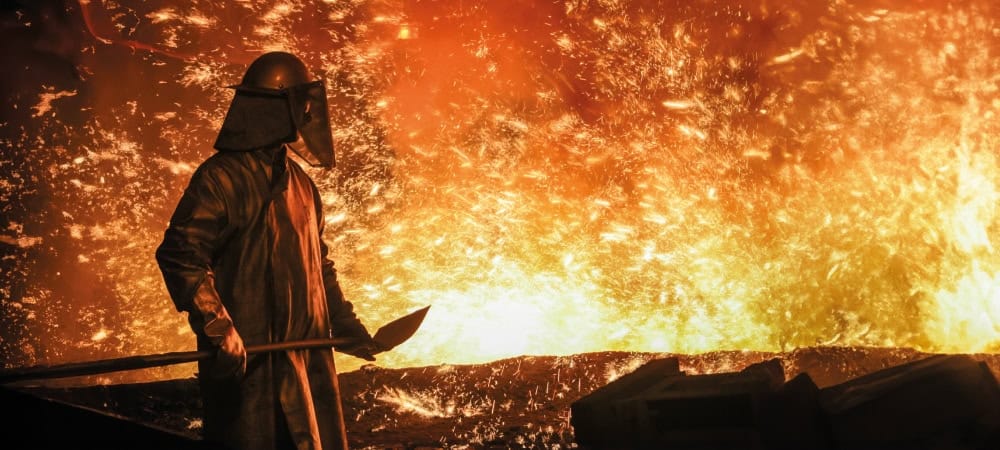Salzgitter AG relies on green technology with S/4 transformation


The decarbonization of a leading German steel group is more than just an ambitious goal. After all, steel production and processing are among the industrial processes with the highest emissions. Nevertheless, Salzgitter decided early on to put the project into practice. Reducing the CO2 footprint is also intended to secure the company's profitability and competitiveness in the future.
Salzgitter's sustainability strategy is also driving digitalization. With the S/4 Hana transformation program, the Group is creating an important foundation for the implementation of innovation and sustainable development.
Transformation during ongoing production
The S/4 project is now entering the home straight. "We have already implemented the major parts of this transformation program, also thanks to the help of our partners," says Arne Brinkmeier, Head of SAP Applications and S/4 Transformation Program Manager at Salzgitter Digital Solutions, Salzgitter's IT service provider. As part of the S/4 project, the Salzgitter Group carried out a process harmonization in the finance and purchasing areas in addition to a system consolidation. This laid the foundations for efficiently implementing new business models and technological innovations - such as SAP's sustainability portfolio - in the new system landscape.

Arne BrinkmeierHead of SAP and S/4 Transformation, Salzgitter Digital Solutions
One of the most important milestones was the go-live of the steel companies, the core production facilities where steel is produced and processed. The special requirement here was that production had to run in parallel. "This meant that we could only take a few days to stop the ERP system, transfer it to S/4, carry out the data migration and then reconnect it to production and read in the many interfaces and telegrams," explains Arne Brinkmeier.
100 hours cutover
The go-live of the steel companies was extremely challenging. "That was certainly something special. We had a phase of 100 hours of cutover, 60 hours of which were dedicated to data migration alone. The processes were running at that moment. We were therefore dependent on making the system available again under S/4 and connecting it. That was a very important phase," says Arne Brinkmeier, describing what happened. The foundations for the successful go-live were extensive testing, which began nine months before the scheduled implementation, and the support provided by cbs. "cbs really provided us with excellent and very professional support here. Having such a reliable partner at our side gave us a lot of confidence and support and contributed to our success," continues Brinkmeier.
Goal: Decarbonization of the value chain
Salzgitter pursues a consistent sustainability strategy in which programs such as Salcos (Salzgitter Low CO2 Steelmaking) are implemented. The aim is to produce steel with low CO2 emissions. On the one hand, the Group is striving to achieve climate neutrality itself, and on the other, it is supporting its customers in decarbonizing their value chains in a sustainable and transparent manner. The green products offer solutions for companies in the energy industry, the automotive industry and the construction industry that want to reduce the CO2 emissions of their products.
Making the carbon footprint measurable
In order to ensure and monitor this, the plants and systems must be connected on the IT side and data transparency must be established. This makes the sustainability strategy a driver for digitalization at Salzgitter. Specifically, the carbon footprint is to be calculated at company and product level, for which the emissions must be measurable and analyzable. Ultimately, there also needs to be a way to incorporate the data into company processes in order to derive real added value from it. Solutions such as SAP Sustainability Footprint Management, SAP Environment, Health and Safety Management and the SAP Sustainability Control Tower, which can now be introduced and tested following the transformation to S/4, serve this purpose. And that's not all: the steel group is examining the decarbonization of the value chain with CO2 balancing software that compares incoming and outgoing emissions. At the same time, SAP Analytics Cloud (SAC) is being used as a reporting solution in the background.
However, the transformation not only serves to implement the sustainability strategy. It enables the further development of the company in all areas. "SAP S/4 Hana forms the basis for us to implement further innovations. We are relying on a hybrid system architecture based on SAP BTP," says Arne Brinkmeier. "We currently operate our systems on-premises. With the cloud, we have the opportunity to adopt innovations from SAP very dynamically."
Mammoth project as a basis for innovation
The project was challenging, but also attractive for both sides thanks to the perfect, overarching collaboration. Stefan Risse, Managing Director of cbs, also emphasizes this: "We implemented a mammoth project with the S/4 transformation program and thus laid the foundation for Salzgitter to tackle innovations. The collaboration was always positive and we never lost sight of the goal, even during challenging project phases. We are proud to be part of Salzgitter's strategy towards green steel and to have completed a very successful project together - Salzgitter is definitely innovation-ready."

Stefan RisseManaging Director, cbs Corporate Business Solutions
To the partner entry:







